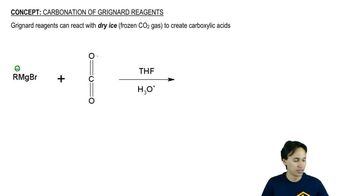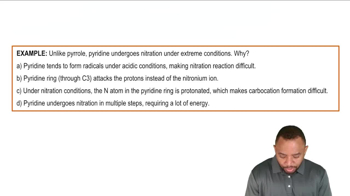Show how you would use Grignard syntheses to prepare the following alcohol from the indicated starting material and any other necessary reagents.
(d) 2-cyclohexylethanol from bromocyclohexane


 Verified step by step guidance
Verified step by step guidance Verified video answer for a similar problem:
Verified video answer for a similar problem:



 13:4m
13:4mMaster Reactions of Organometallics with a bite sized video explanation from Johnny
Start learning